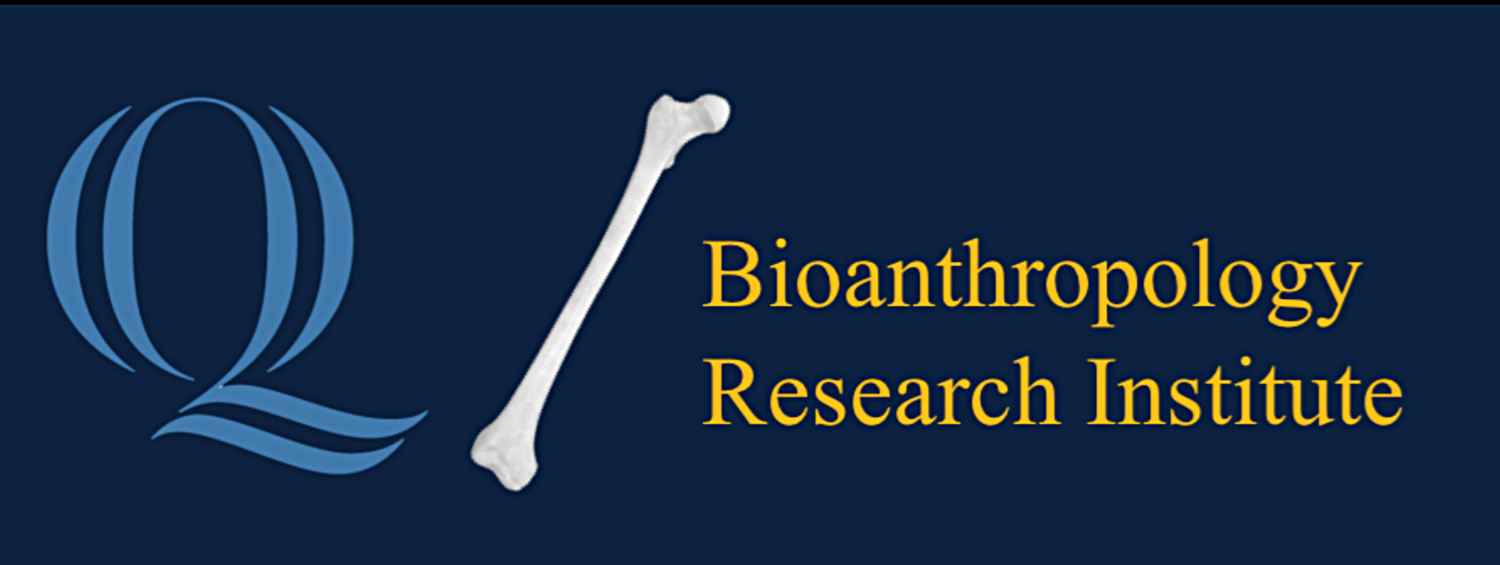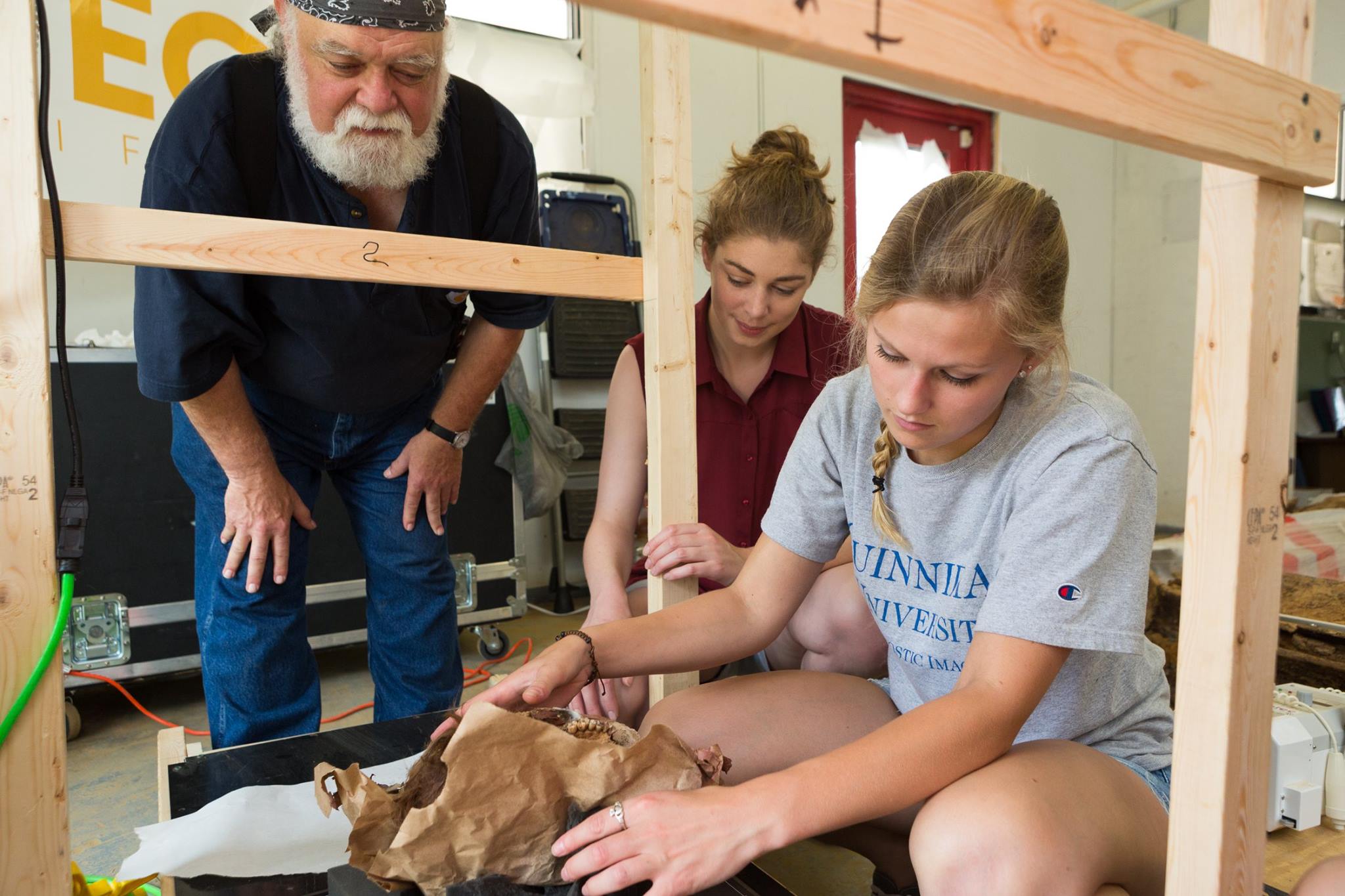NORTH HAVEN — Most things don’t last, unless they’ve been mummified.
Hundreds of 2,000-year-old animal mummies, including crocodiles, cats, baby gazelles, falcons and ibises were removed from storage at Yale’s Peabody Museum of Natural History and brought to Quinnipiac University’s North Haven campus for study by renowned Egyptologist and animal mummy specialist Dr. Salima Ikram, of American University in Cairo and a visiting professor at Yale University.
Ikram led Gerald Conlogue, professor emeritus of diagnostic imaging and co-director of the Bioanthropology Research Institute at Quinnipiac University, and William Hennessy, a clinical professor of radiologic science, in the opening of each mummy along with Dr. Roger Colten, collections manager in the division of anthropology for the Peabody.
Radiological science, diagnostic imaging and anthropology students from Quinnipiac assisted in in the mummies’ examination using digital radiography, mammography and multi-detector computed tomography. They, along with Near Eastern studies students from Yale, got real-world research experience as the team used the series of machines to inspect each animal mummy, gaining information about the life of the animal before it died and the methods of mummification used.
“This will make a huge difference for us and I also want my students to understand how to unify science and the humanities and to work things out together,” Ikram said. “It’s a good way of unifying the two aspects of ancient Egypt.”
The mummies they are studying would have been wrapped more than 2,000 years ago and used in funeral ceremonies. Mummification of animals in ancient Egypt had several purposes. Sacred animals were bred with the intention of mummification, which are known as votive offerings that were placed in a tomb, but pets were also mummified, Ikram said.
Some animals were mummified to be guardians in the afterlife or at the entrance of a tomb, but they were also mummified as gods because the ancient Egyptians used to believe the spirit of the god would enter into the animal and when it died the spirit of the god would enter another animal, Ikram said.
Hennessy and Conlogue X-rayed these animal mummies 20 years ago with plain film machines, but with the latest digital machines they are able to compare the technological advances and hopefully discover new information.
“Our goal is to take it to the next stage,” Hennessy said. “Is there anything we can see now that we didn’t see 20 years ago because we have better technology? It’s going to provide a lot of information. Time will tell how much information we have, but I think we can do a lot more than we did 20 years ago.”
Film still gives best resolution, he said, but the difference with digital X-rays is a technician can change the levels of contrast of the image so it makes it appear that one can see the image better. With the CT scan a technician can take sectional images, looking at a piece at a time. Notably, the CT scan can look at soft tissue, which wasn’t possible when the mummies were first X-rayed in 1997.
“That’s the magic in the MDCT,” Conlogue said, who also co-hosted the National Geographic program “The Mummy Road Show.” The CT also tells how the animals were wrapped and mummified and shows organs.
“Most excitedly it can tell us its last meal,” Ikram said. In studying the images, Ikram will be looking at mummification methods as well as age and sex and any indication of trauma on the bones because it will help give her a better understanding of the animal’s biography and see how mummification on a large scale in temples was practiced.
“We’re trying to look into that to understand what the ancient Egyptians were thinking and their religious practices in addition to physical stuff,” Ikram said. By studying the new images, she’ll gain information about animal management and animal husbandry in ancient Egypt and be able to better inform a larger picture of the period and people. Ikram has studied similar mummies all over the world since 1996.
“It’s a tremendous opportunity for students to take what they’re learning in the classroom that they have yet to apply, since most have not been in clinic,” Hennessy said.
Tania Grgurich, clinical associate professor of diagnostic imaging at Quinnipiac, helped students use the MDCT to image a 2,200-year-old mummified crocodile, creating a 3D image of the mummy. And while that particular crocodile wasn’t wrapped, Grgurich said the machine is able to virtually peel away wrappings on mummies so researchers and technicians can examine the mummy without damaging it.
“It gives people an opportunity to see that as an X-ray technician, you don’t just have to sit here and do live people,” Amanda Taft said, who is a master’s student in health sciences. “You can do mummies and work with anthropologists and things you would never expect.” She assisted in using mammography to examine baby crocodile mummies because it gives a greatly detailed picture.
The images will be sent to Dr. Anthony Fischetti, head of diagnostic imaging and radiology at the Animal Medical Center in Manhattan and a consultant for the Brooklyn Museum’s Soulful Creatures Animal Mummies in Ancient Egypt exhibit. He will determine the age and health of each animal at the time of its death using the new images.
“It’s Halloween and we have mummies walking around,” Hennessy said.
The participating students will assist Conlogue in preparing the technical aspects of the study for presentation along with Ikram’s findings at the World Congress on Mummy Studies in May.
Source: http://www.nhregister.com/metro/article/Quinnipiac-radiology-professors-and-students-use-12321420.php





